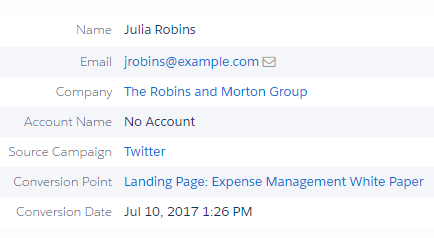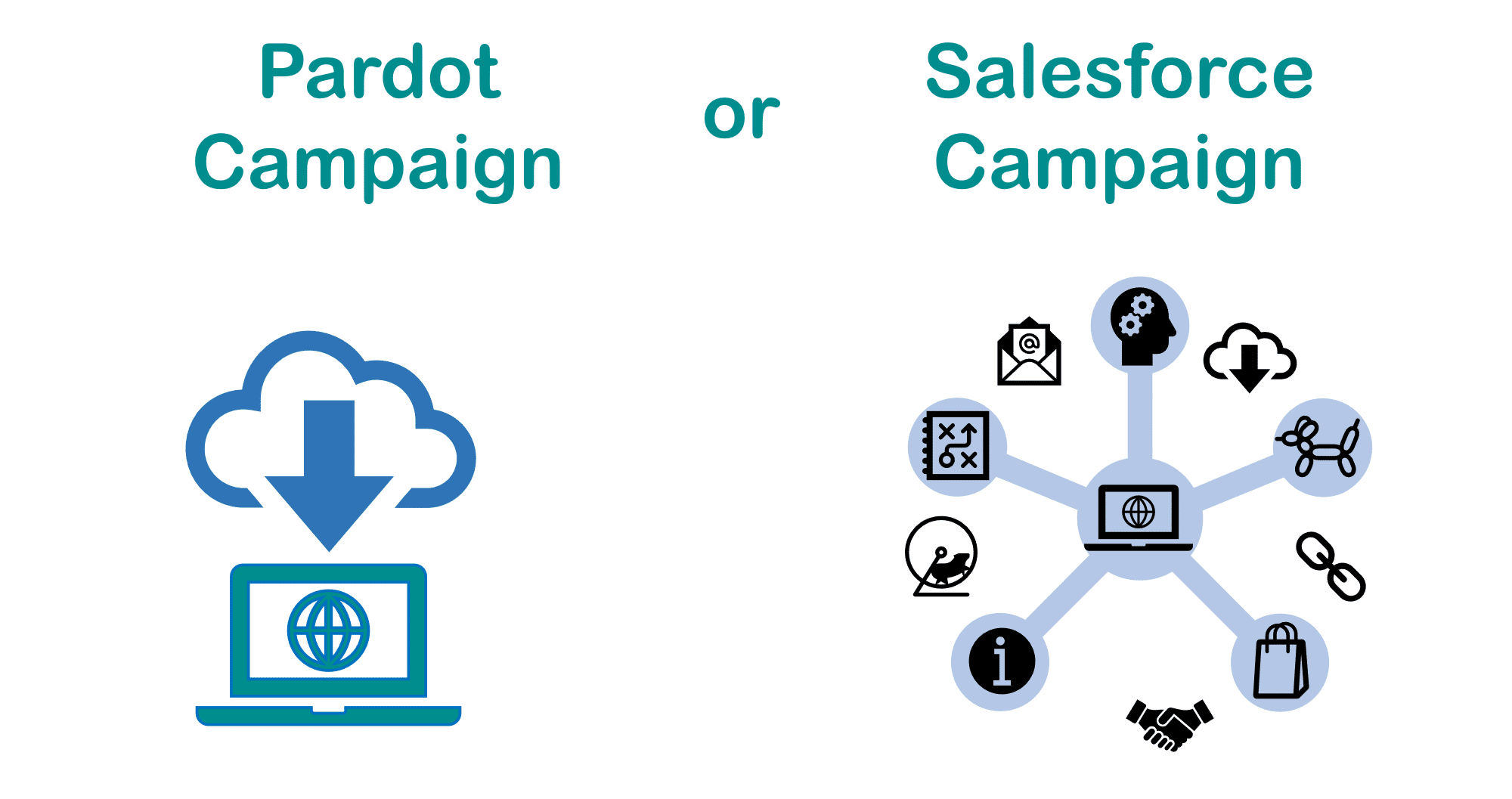Pardot is a powerful marketing automation tool. The feature known as a Pardot Campaign features tracking cookies which you can deploy to your website. Once your prospects acquire a cookie you can see what they do while on your website.
Questions about Pardot Campaigns come up frequently in the Salesforce community. They are often confused with Salesforce Campaigns because of the similar names.
What is the difference between a Pardot Campaign and a Salesforce Campaign?
This is a difficult concept for seasoned Pardot admins, so let’s start off with some clarifications.
Pardot Campaign: Prospects can be in only one Pardot Campaign. It indicates ‘what brought the prospect to your website.’ You would call it ‘source’ in most other programs.
To take advantage of this concept, I like name my Pardot Campaigns “Started With [XYZ]” and make some large ‘buckets’ or categories. Some examples:
| Pardot Campaign Name | Source |
|---|---|
| Started with email import | Prospect was imported from a previous email sending tool. |
| Started with AdWords | They clicked a PPC ad (AdWords, etc.). |
| Started with Webinar | Prospect registered for a webinar hosted on one of the webinar platforms connected to your Pardot account (GoToWebinar, ReadyTalk, WebEx). |
| Started with Social Media | They clicked a link in a Pardot social post (Twitter, Facebook, etc., posted via Pardot’s tool.). |
| Started with Salesforce | Prospect was already in Salesforce prior to using Pardot, or was entered into Salesforce and then synced down to Pardot through the Pardot/Salesforce connector. |
A prospect’s Pardot Campaign will not change unless you manually make a change. Since it is an indicator of ‘source’ you generally do not want to change it.
If you want to change a Prospect’s Pardot Campaign, you can accomplish it via Automation Rules, Form completion actions, and more.

Salesforce Campaign: Salesforce Campaigns are multi-attribution. Prospects can be in multiple Salesforce Campaigns at the same time.
A Salesforce Campaign can help you answer the question: ‘What marketing activities influenced them to convert/buy from us?’
You will probably have Parent/child campaigns in Salesforce, where you group related activities together. In this example, all webinars are grouped under a parent campaign. The parent campaign simply called ‘Webinar.’
Webinar (Parent Campaign)
–January 2017 Webinar [sent/responded]
–February 2017 Webinar [sent/responded]
–March 2017 Webinar [sent/responded]
–April 2017 Webinar [sent/responded]
When you send a prospect an email about a webinar you should add the prospect to each Salesforce Campaign (with a status of ‘sent’).
Imagine you email a prospect email about all of the webinars and they register for two of those webinars. The prospect will be in two campaigns with the status of ‘sent’ and two with the status of ‘responded.’
You can then use Salesforce Reports to report on the performance of your campaigns, and compare it to sales (closed/won Opportunities) and calculate the ROI of your marketing efforts.
Pardot Campaigns can be tricky to understand.
Does a Prospect’s Pardot Campaign always match the first form they filled out?
No. It is common for a prospect to have a Pardot Campaign which is different than the first form they completed.

This is two different concepts:
- Pardot Campaign = Source (what brought them to you).
- Conversion Point = First action which applied a browser cookie.
In an example, imagine you put out a Twitter post, and an anonymous visitor clicked it. That click was what brought them to your website.
You might have used Pardot’s Social Posting feature to post to Twitter. Or maybe you posted directly to Twitter but used a Pardot Custom Redirect assigned to the campaign ‘Started with Twitter.’ In either scenario, the prospect will have the Pardot campaign of ‘Started with Twitter’.
Remember, clicking this Twitter link was the FIRST action which brought them to your site. Their anonymous visitor cookie is associated with the Pardot Campaign ‘Started with Twitter.’
Then the visitor filled out a form to subscribe to your newsletter. When they submitted the form the prospect entered your Pardot database. The prospect will have the campaign ‘Started with Twitter’ because the first thing they did (the action which brought them to your website) was a click on a Twitter post.
Salesforce Campaigns offer you very robust reporting
Pardot’s reporting is limited. You can see some lifecycle reports, but they are not customizable.
Leveraging Pardot with Salesforce Campaigns is the best way to calculate ROI.
You can use Pardot activities (such as Form submissions) to measure how a prospect interacts with your website and which marketing campaigns contributed to a sale.
For each Pardot Form, you can have a completion action of ‘Add to Salesforce Campaign [campaign name] with status [responded]’.

As you deploy more Pardot forms across your website and report them back to Salesforce Campaigns, you will be able to measure what influenced a Prospect to buy from you.
Need help with Pardot and Salesforce Campaigns? Contact us for a consultation.


